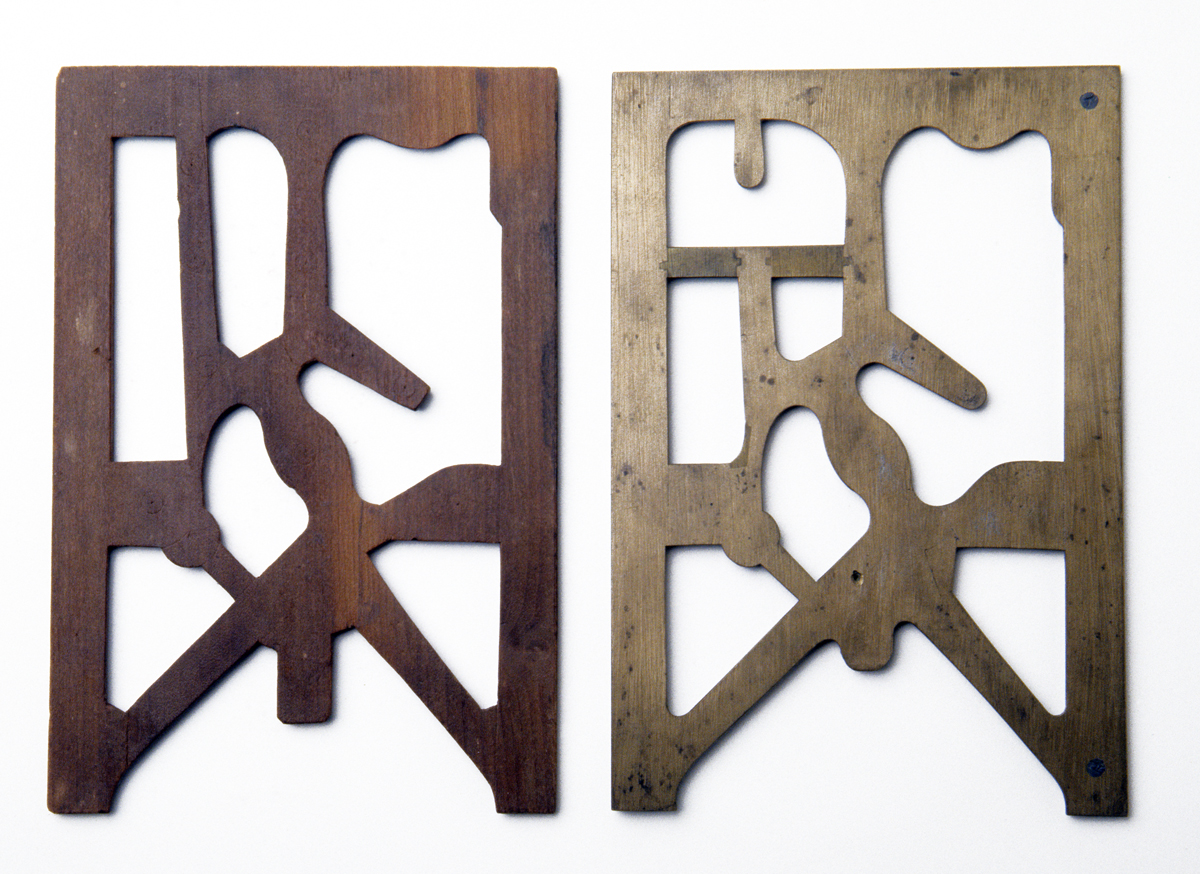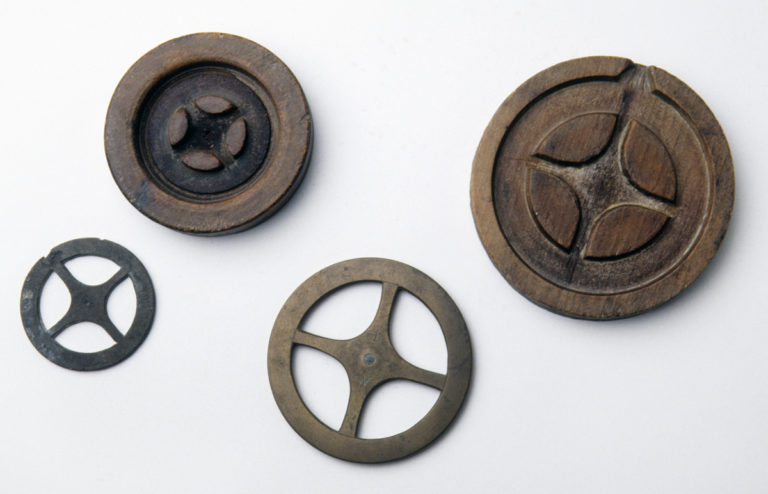Patterns
The wood pattern (left) was used by Nathaniel Dominy to cast brass plates used in the construction of his more complex clocks. Between two brass plates, fixed in a vertical position, were the pivots, arbors, wheels, barrels, escapement, and other parts needed to make a clock keep time. This wood form was pressed into casting sand, removed, and melted brass poured into the impression left in the sand. After cooling, the resulting pierced plate was lifted from the sand and hardened by hammering It was then cleaned, filed, and polished. The Dominys used this unique pierced plate design to conserve brass, always a scarce commodity, especially in rural areas. The number 16 is scratched on the bottom center of the plate, denoting that it weighs exactly one pound.
Clockmaker's plate pattern, Nathaniel Dominy IV (maker), ca.1785. Tulip poplar. 7.8" (L), 5.3" (W). Brass plate, 7 13/16 (L), 5 5/16 (W). Museum purchase with funds provided by Henry Belin du Pont, (Wood)1957.0026.524, (Brass) .502


With these wooden casting patterns the Dominys were able to standardize clock parts within their own shop. The Dominys cast their own clock wheels. They began the process by packing a shallow wooden box with fine, wet sand, creating a casting flask. The wooden pattern was pressed into the sand and removed, leaving a hollow impression into which molten brass was poured. Once cooled, rough casting appendages were filed from the brass blank, and the blank was polished on the lathe, in preparation for cutting the teeth. Brass or lead templates assured a finished wheel of the correct dimensions.
Some idea of the number of templates needed by a clockmaker is obtained from those below made to assure the dimensions of hour and minute hands and clock wheels.
